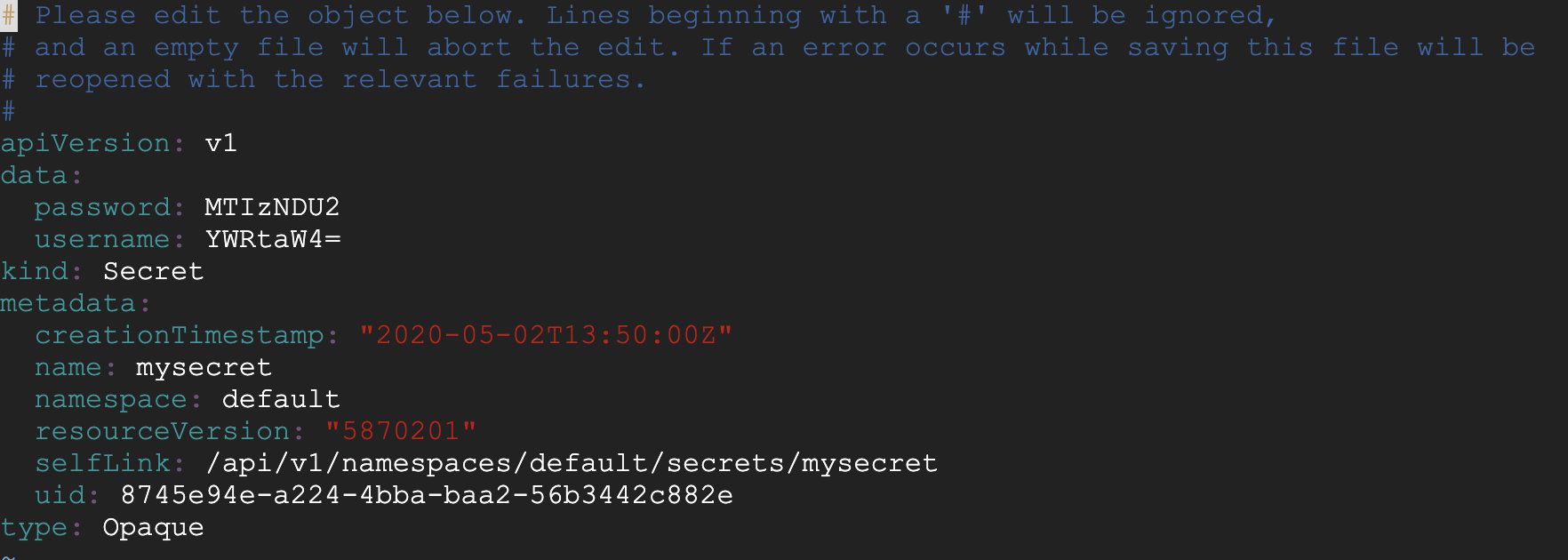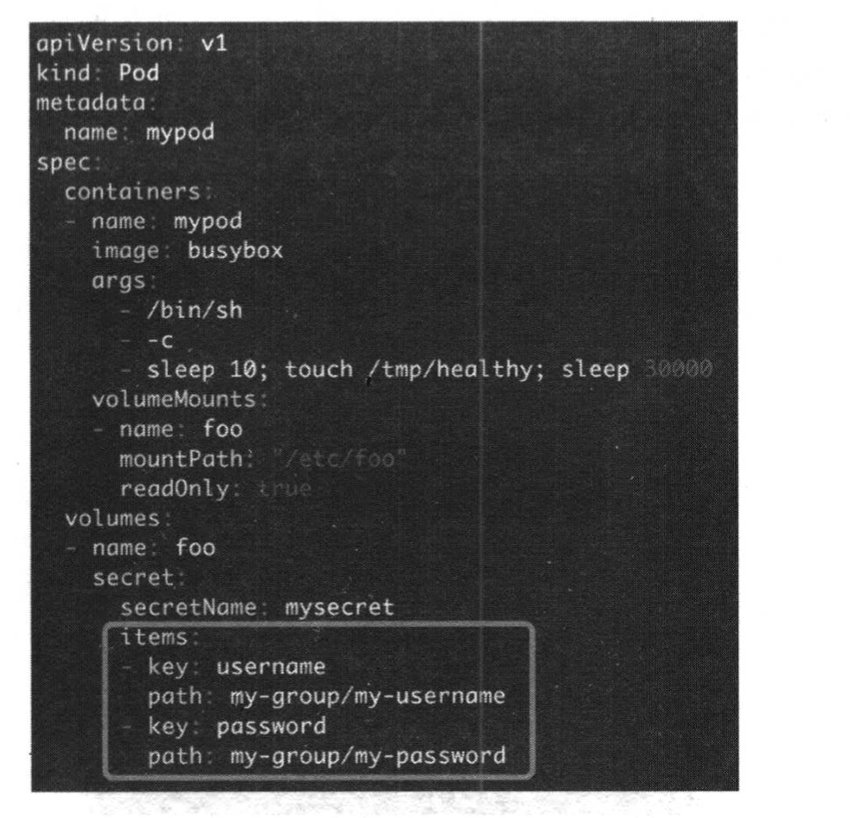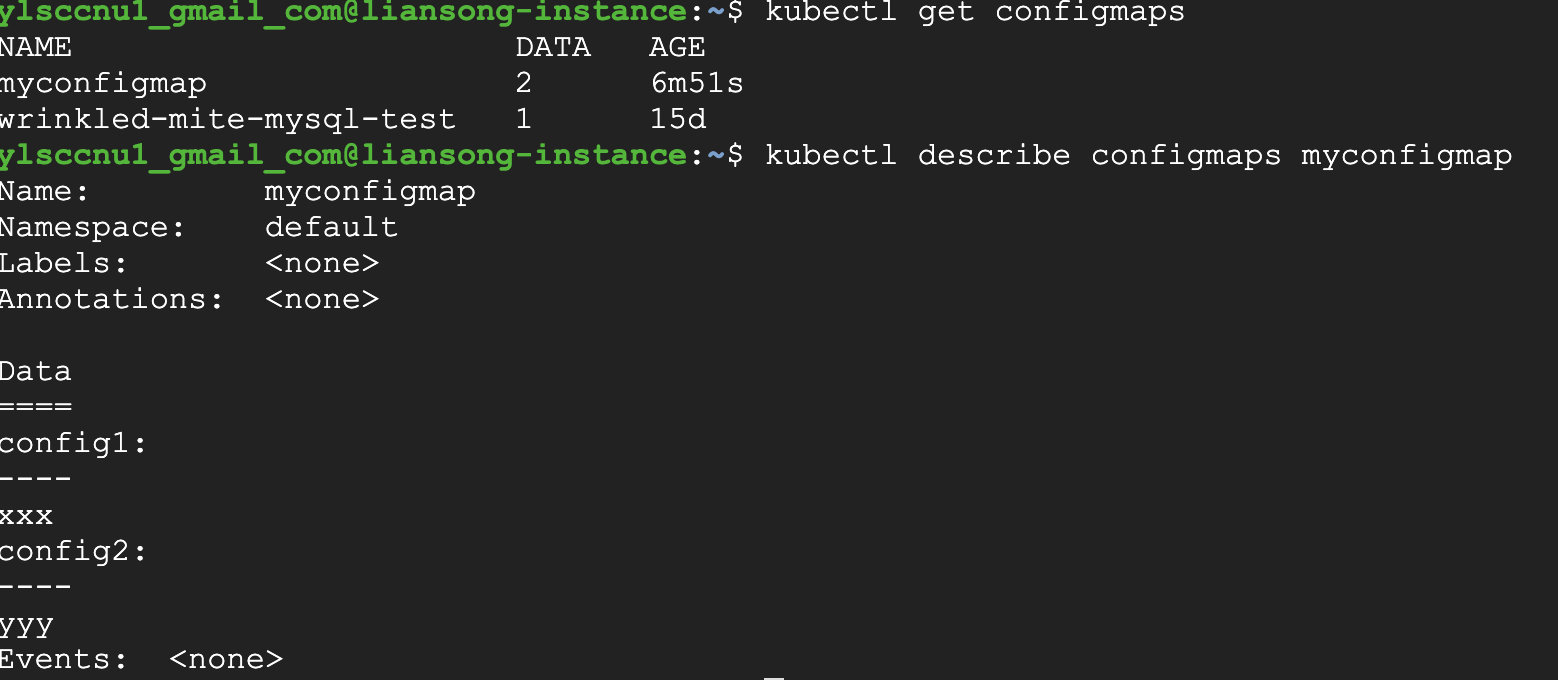Secret And ConfigMap
K8S study notes

1. Background
Up to now, perhaps you haven’t had to pass any kind of configuration data to the apps. Because almost all apps require configuration, which shouldn’t be baked into to the built app itself. This article shows two ways to pass the configuration data to the apps.
2. Secret
Secret is for the information you’ve passed to the containers is sensitive. K8s provides a separate object called a Secret. There are 4 ways to create the Secret.
-
Through the –from-literal
1kubectl create secret generic mysecret --from-literal=username=admin --from-literal=password=123456 -
Through the –from-file, each file contains one item.
1 2 3echo -n admin > ./username echo -n 123456 > ./password kubectl create secret generic mysecret1 --from-file=./username --from-file=./password -
Through the –from-env-file. In the env.txt, every line key-value match one item.
1 2 3 4 5cat << EOF > env.txt username=admin password=123456 EOF kubectl create secret generic mysecret --from-env-file=env.txt -
Through the YAML file.
1 2 3 4 5 6 7apiVersion: v1 kind: Secret metadata: name: mysecret data: username: YWRtaW4= password: NTY3ODk=The username and password is the sensitive information, then are encrypted. Then can use: “kubectl apply -f my secret.yaml” to create the secret.
After create the secret, then can use command to show the secret. Like this.

Also you can use describe command to show the details.


In this picture, you can see the password and username are encrypted.
3. How to use secret in the Pod
As we known, Secret is the separated object in the k8s, so pod would use secret through the volume. How to use, like below.
-
Create the pod, in the pod, define the volume, also from the secret. (Volume)
1 2 3 4 5 6 7 8 9 10 11 12 13 14 15 16 17 18 19 20apiVersion: v1 kind: Pod metadata: name: mypod spec: containers: - name: mypod image: busybox args: - /bin/sh - -c - sleep 10; touch /tmp/healthy; sleep 30000 volumeMounts: - name: foo mountPath: "/etc/foo" readOnly: true volumes: - name: foo secret: secretName: mysecret
From the Yaml file, we can see, mount the secret key value to the path: /etc/foo. Then we can view the secret.

Also can save the data to the group path. In this way, we can save the secret encryptions.
-
Create the Pod, define the env variable in the Pod. (environment)
1 2 3 4 5 6 7 8 9 10 11 12 13 14 15 16 17 18 19 20 21 22 23apiVersion: v1 kind: Pod metadata: name: mypod-env spec: containers: - name: mypod-env image: busybox args: - /bin/sh - -c - sleep 10; touch /tmp/healthy; sleep 30000 env: - name: SECRET_USERNAME valueFrom: secretKeyRef: name: mysecret key: username - name: SECRET_PASSWORD valueFrom: secretKeyRef: name: mysecret key: passwordIn the pod, define the key and value. Then can get the value through the environment variable.
4. ConfigMap
k8s allows separating configuration options into a separate object called a ConfigMap. It’s different from the secret. It’s used to the insensitive data. Let’s show. It’s the same as secret, there are 4 ways to create the ConfigMap.
-
Through the –from-literal
1kubectl create configmap myconfigmap --from-literal=config1=xxx --from-literal=config2=yyy -
Through the –from-file
1 2 3echo -n xxx > ./config1 echo -n yyy > ./config2 kubectl create configmap myconfigmap2 --from-file=./config1 --from-file=./config2 -
Through the –from-evn-file
1 2 3 4 5cat << EOF > env.txt config1=xxx config2=yyy EOF kubectl create configmap myconfigmap3 --from-env-file=env.txt -
Through the YAML file
1 2 3 4 5 6 7apiVersion: v1 kind: ConfigMap metadata: name: myconfigmap data: config1: xxx config2: yyyIt’s the same as secret. From this, can create the separate config object, then can be used in the Pod.

5. How to use configmap in the Pod
It’s the same as secret. The configmap is like to the separate object, then Pod can use the object and get the key value. Below is one practice about configmap.
- Create the configmap.
1 2 3 4 5 6 7 8 9 10apiVersion: v1 kind: ConfigMap metadata: name: myconfigmap5 data: logging.conf: | class: logging.handlers.RotatingFileHandler formatter: precise level: INFO filename: %hostname-%timestamp.log
-
Create the Pod with the configmap.
1 2 3 4 5 6 7 8 9 10 11 12 13 14 15 16 17 18 19 20 21 22apiVersion: v1 kind: Pod metadata: name: mypodconfig spec: containers: - name: mypodconfig image: busybox args: - /bin/sh - -c - sleep 10; touch /tmp/healthy; sleep 30000 volumeMounts: - name: foo mountPath: "/etc/foo" volumes: - name: foo configMap: name: myconfigmap5 items: - key: logging.conf path: myapp/logging.confIn this Pod, define the mount path. Then execute the below command.
